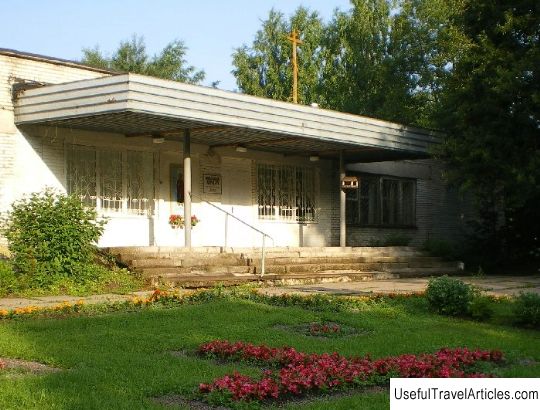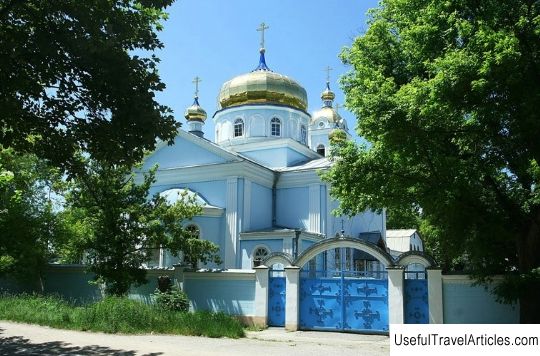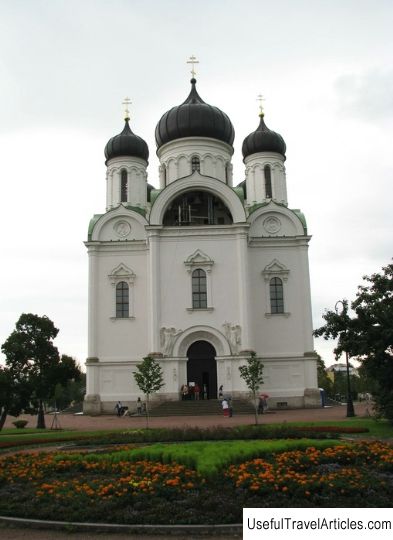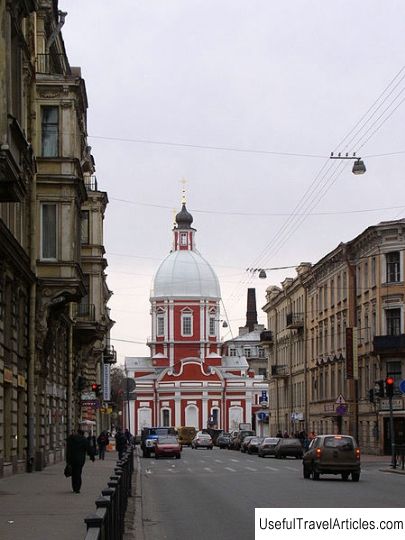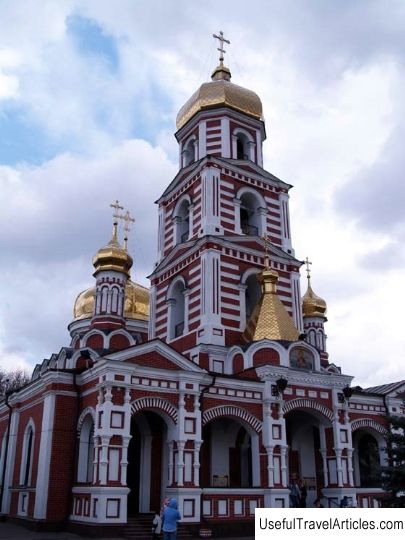Church of the Great Martyr Panteleimon the Healer description and photos - Russia - St. Petersburg: Pushkin (Tsarskoe Selo)
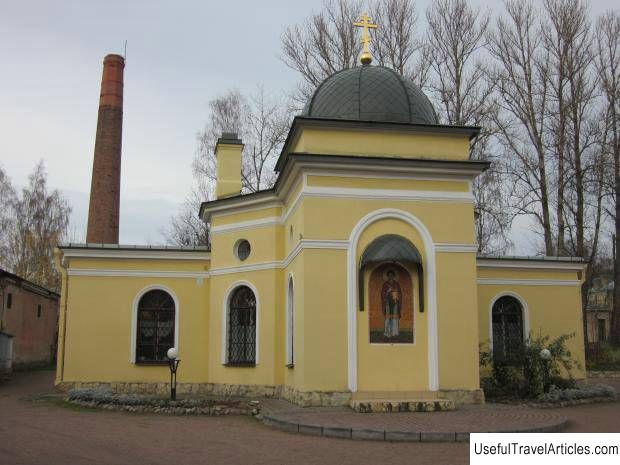
Church of the Great Martyr Panteleimon the Healer description and photos - Russia - St. Petersburg: Pushkin (Tsarskoe Selo). Detailed information about the attraction. Description, photos and a map showing the nearest significant objects. Photo and descriptionThe Church of the Holy Great Martyr Panteleimon the Healer is located in Pushkin, on the territory of the N.A. Semashko number 38. The temple is located in the former hospital chapel. He is the heir to the church that was moved here from Sofia. On July 22, 1781, the foundation stone of the temple took place in the newly established city of Sofia. The temple was built between the central city square and the road to Pavlovsk. The temple was consecrated in honor of Constantine and Elena. By 1817, this church, already located on the territory of the abolished city, was dilapidated. The renovation of the church proved to be difficult, and the reconstruction was too expensive. Therefore, on October 9, 1817, a decree was issued to abolish the church with the transfer of bells and its utensils to the hospital church. When the inhabitants of the former Sofia were relocated to Tsarskoe Selo, Emperor Alexander I ordered the construction of a one-story wooden almshouse in the southeastern part of the city and a hospital attached to it. A church was to be located in this building. Its construction began on March 21, 1809. On April 13, 1817, the sick and residents of the old almshouse were transported to the building of the new almshouse. In May 1817, in one of the hospital premises, the Church of the Annunciation of the Most Holy Theotokos was consecrated, which was based on a camp church. The clerk of the Constantine-Eleninsky Church was also transferred here. On July 2, 1846, according to the project of the architect N.V. Nikitin, a new stone hospital building was laid, the Annunciation Church was placed in the dining room of the almshouse. Commemorative copper plaques were put into the wall of the future church at the hospital. The hospital was built in 1852 and was a two-story stone building with a front entrance, a basement, and a staircase leading to the hospital wards. The hospital was designed for 150 beds, and a department for women in labor was also provided. The hospital housed a stone one-story almshouse for 40 people. Simultaneously with the completion of the construction of the hospital, there, according to the project of the architect N.E. Efimov built a church, which was consecrated in honor of the icon of the Mother of God "Joy of All Who Sorrow." In 1913, the church was expanded and the lower church was laid in honor of the 1600th anniversary of the Edict of Milan. On November 8, 1914, Archpriest Afanasy Belyaev, in the presence of Alexandra Feodorovna, the Greek Queen and the Grand Duchesses Anastasia, Maria, Tatiana and Olga, consecrated the cave church of the hospital in honor of Tsars Constantine and Helena. In 1930, the Joy of All Who Sorrow Church was closed. Some of the vestments and icons were transferred to the Catherine Cathedral, and some to the antiques office. The main shrine of this church was the icon of the Mother of God "Joy of All Who Sorrow", which attracted many sick people. Every year on July 5 (according to the old style), the icon was taken for a citywide procession. In addition, the image was taken around the city and its environs and prayers were performed. After the church was closed, the icon was transferred to the Catherine's Cathedral. In the middle of the 19th century, a chapel was built in the courtyard of the hospital. An iconostasis from the camp church of Empress Catherine I was installed in it. Previously, the altar of the camp church stood in the chapel, which in 1872 was transferred to the Tsarskoye Selo gymnasium church. The chapel was used as a mortuary, in it they performed a funeral service for the dead. In 1907-1908, the building was partially rebuilt and expanded according to the project of S.A. Danini. For some time, the body of Archpriest Ioann Kochurov was in the building of the chapel. The chapel was closed in 1929. Until 1999, it was used as a city morgue. In 2000, the chapel was returned to the Russian Orthodox Church, and restoration work began in it. In 2001, it was consecrated as a church in honor of the Holy Great Martyr Panteleimon. In the winter of 2002, a cross was installed on the dome of the church. The building of the church has one dome, stone, the walls are painted yellow. On the apse there is a mosaic icon of St. Panteleimon. For some time, the body of Archpriest Ioann Kochurov was in the chapel building.The chapel was closed in 1929. Until 1999, it was used as a city morgue. In 2000, the chapel was returned to the Russian Orthodox Church, and restoration work began in it. In 2001, it was consecrated as a church in honor of the Holy Great Martyr Panteleimon. In the winter of 2002, a cross was installed on the dome of the church. The church building has one stone dome, the walls are painted yellow. On the apse there is a mosaic icon of St. Panteleimon. For some time, the body of Archpriest Ioann Kochurov was in the chapel building.The chapel was closed in 1929. Until 1999, it was used as a city morgue. In 2000, the chapel was returned to the Russian Orthodox Church, and restoration work began in it. In 2001, it was consecrated as a church in honor of the Holy Great Martyr Panteleimon. In the winter of 2002, a cross was installed on the dome of the church. The building of the church has one dome, stone, the walls are painted yellow. On the apse there is a mosaic icon of St. Panteleimon. In 2001, it was consecrated as a church in honor of the Holy Great Martyr Panteleimon. In the winter of 2002, a cross was installed on the dome of the church. The church building has one stone dome, the walls are painted yellow. On the apse there is a mosaic icon of St. Panteleimon. In 2001, it was consecrated as a church in honor of the Holy Great Martyr Panteleimon. In the winter of 2002, a cross was installed on the dome of the church. The building of the church has one dome, stone, the walls are painted yellow. On the apse there is a mosaic icon of St. Panteleimon. We also recommend reading Victoria Falls description and photos - Zambia: Livingston Topic: Church of the Great Martyr Panteleimon the Healer description and photos - Russia - St. Petersburg: Pushkin (Tsarskoe Selo). |
